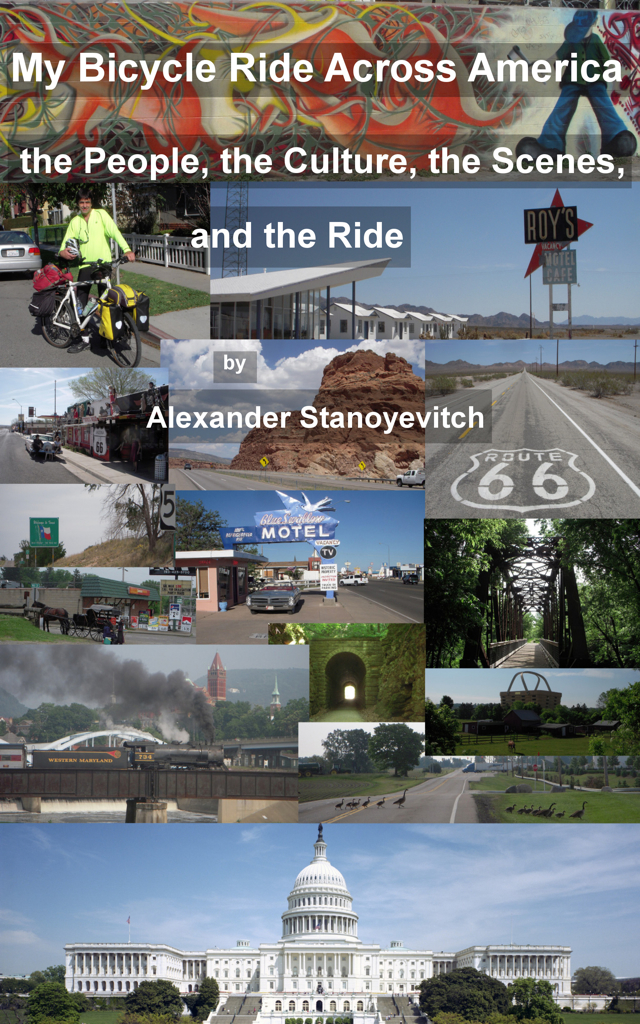
Alex Stanoyevich’s philosophy about bikes is rather simple—use them as often as possible and get others to use them as often as possible. But his exuberance when talking about them is anything but simple. He speaks of bicycling with excessive gesticulations and the enthusiasm of an affable nerd. And by nerd, I mean not in the awkward sense, but in the sense that he truly loves and knows everything he is discussing, which is perfect since he’s a math professor.
Stanoyevich is from many places. He grew up on the East Coast, was educated in the midwest and lived in Hawaii and Guam before landing in Long Beach in 2005. This movement probably explains his love of exploring environments on a bicycle. Of course, our own city helps foster that ideal and he gets excited about the possibilities of, for example, turning the bike lanes into tax incentives.
“You know we have the technology to track people biking to work,” he says as I nod in agreement, holding my iPhone up as a possible answer.
But even a passion for biking doesn’t entail a passion for exploring the United States coast to coast with little but your legs and two wheels. That part of Stanoyevich’s life started when he began teaching at Cal State Dominguez Hills, where he would drive the 11-mile bumper-to-bumper commute.
“You sit in traffic, y’know? Just sit. And then you get stressed,” he says, reflecting a sentiment many commuters feel but rarely act upon. “But then, I figured I might as well get a workout and bike to school. We even have showers at school so I simply shower there and move on with my day… If more businesses had showers—I know they can’t all just install showers, but if they did, I could guarantee you more would bike to work.”
Then the 11 miles—mostly along the LA River Trail—became too easy and too routine for Alex, challenging Alex’s brain and body to consider a different trek: Long Beach to San Diego.
This was the start of his addiction to long rides, with his first multi-day ride (thanks to the massive furloughs instituted on CSU faculty and staff) taking him on a windy ride through the entire state of Missouri.
Then he took on San Francisco to Los Angeles, a bit of a frustrating trek initially given his difficulties of getting his bike to San Francisco. “I’d thought I’d take the airplane and fly my bike up there, but it wasn’t that easy,” he said, citing packaging issues and being excessively expensive. “Even the train made you put you in a box—Amtrak made you actually box it.”
But he made it—and he made it twice. However, his schedule as a professor dictated everything, including when he could ride. And like the stars aligning with his first initial furlough, Alex was on a research sabbatical in Stanford when he realized their quarter system didn’t align with the CSU’s semester system, allotting him another break of over a month-and-a-half. Even more befitting was the fact that it was approaching the end of autumn, giving him access to the Mojave Desert— “It can get 130 degrees there in the summer, y’know?” he said—at much cooler temperatures.
And so he did it, taking off from Long Beach and beginning the 46-day, 3100-mile endeavor he had always dreamed of doing since beginning to bike seriously in graduate school. His journey took him through Orange County, down Route 66 through Arizona and New Mexico, with his goal of getting through Missouri—the place that gave him his first multi-day ride experience—before ending in Washington D.C.
When frustrated by the elements or the difficulty of the ride or detours, he resorted to famed cyclist Thomas Stephens who, from April of 1884 to December of 1886, rode his Columbia 50-inch “Ordinary” penny-farthing with nickel-plated wheels across the globe for the first time (minus the boats, of course).
“Anytime I ran into an obstacle, I thought of [him]… I mean, he had one of these big-wheeled bikes that weighed 70 pounds—and those things were rough: no padded seats, no shock absorbers. And there weren’t even that many roads!” he says, laughing. “And this guy had to improvise all the time with no maps. So it reminded me to tell myself all the time, ‘This ain’t that bad.'”
It seemed like a beautiful arrangement of Americana: the Oklahoma Panhandle, Texas, Kansas, Mississippi, Illinois, Idaho, Ohio, Pennsylvania and West Virginia were all included in the adventure. He notes of West Virginia, that it was “the scariest place to bike. They’re shocked at bikes on the road and the cars didn’t have patience and it can be really uncomfortable—even though West Virginia has the possibility of being a great place to ride with all the hills and landscapes.”
As he reflected on the difficulty of biking in West Virginia, it brought him back to how even a bike-friendly city like Long Beach could always gain improvements.
“Even though the bike paths are extra sweet and [bike culture] is spreading… Cars need to get better. And they are, but we need to get the public used to the idea of sharing the road—more signs, more bikes, more knowledge.” And of course, he notes, “more patience.”
And given he had the patience to get from LB to DC, I think we should take his note and apply it—both on a bike and behind the wheel.
****
Alex’s book (pictured below) My Bike Ride Across America: The People, the Culture, the Scenes, and the Ride, can be purchased at Amazong by clicking here.


